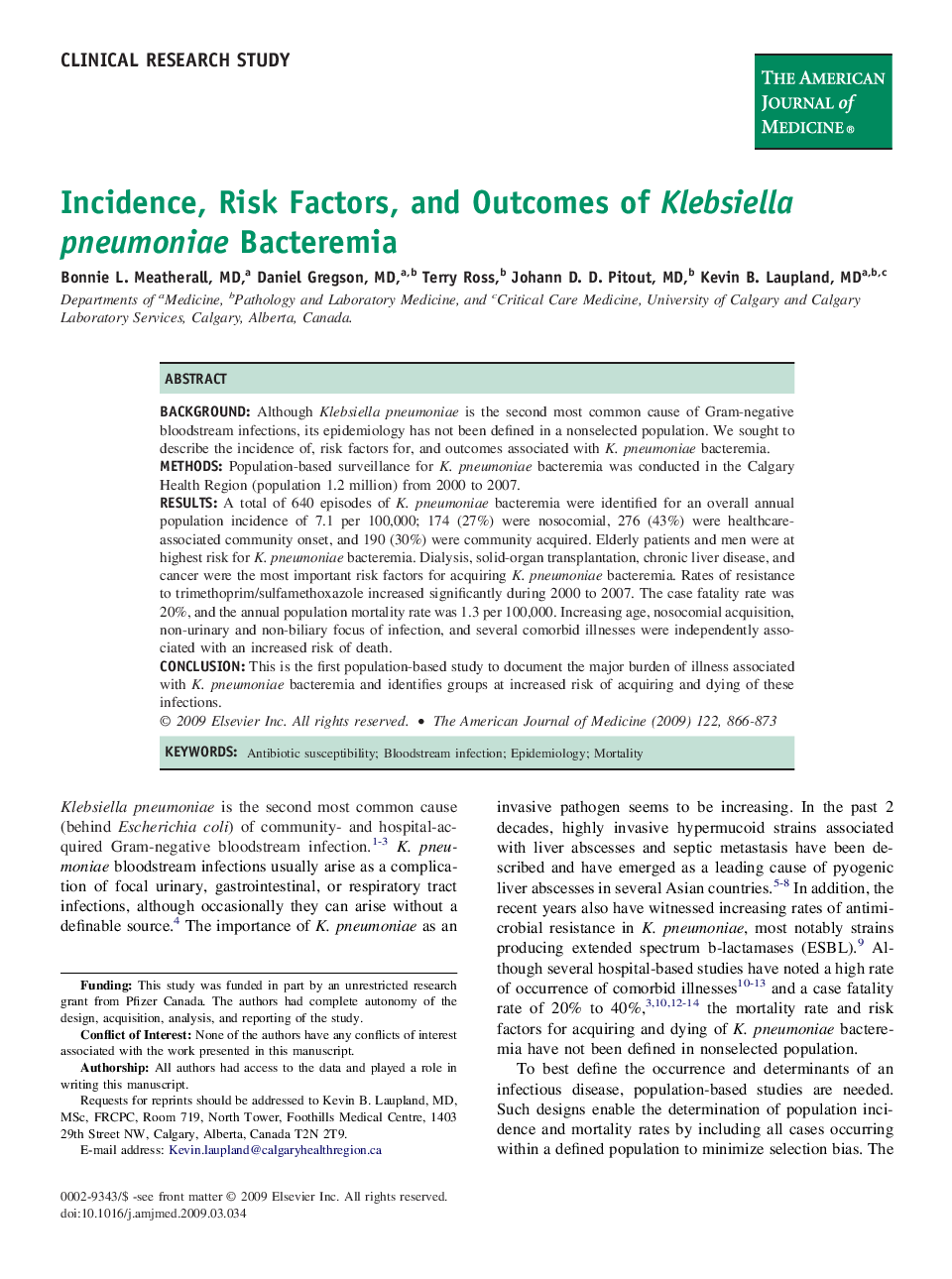| Article ID | Journal | Published Year | Pages | File Type |
|---|---|---|---|---|
| 2724387 | The American Journal of Medicine | 2009 | 8 Pages |
BackgroundAlthough Klebsiella pneumoniae is the second most common cause of Gram-negative bloodstream infections, its epidemiology has not been defined in a nonselected population. We sought to describe the incidence of, risk factors for, and outcomes associated with K. pneumoniae bacteremia.MethodsPopulation-based surveillance for K. pneumoniae bacteremia was conducted in the Calgary Health Region (population 1.2 million) from 2000 to 2007.ResultsA total of 640 episodes of K. pneumoniae bacteremia were identified for an overall annual population incidence of 7.1 per 100,000; 174 (27%) were nosocomial, 276 (43%) were healthcare-associated community onset, and 190 (30%) were community acquired. Elderly patients and men were at highest risk for K. pneumoniae bacteremia. Dialysis, solid-organ transplantation, chronic liver disease, and cancer were the most important risk factors for acquiring K. pneumoniae bacteremia. Rates of resistance to trimethoprim/sulfamethoxazole increased significantly during 2000 to 2007. The case fatality rate was 20%, and the annual population mortality rate was 1.3 per 100,000. Increasing age, nosocomial acquisition, non-urinary and non-biliary focus of infection, and several comorbid illnesses were independently associated with an increased risk of death.ConclusionThis is the first population-based study to document the major burden of illness associated with K. pneumoniae bacteremia and identifies groups at increased risk of acquiring and dying of these infections.
